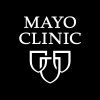
Direct Oral Anticoagulants and Venous Thromboembolism
Venous ThromboembolismMajor BleedThe purpose of this study is to determine whether use of direct oral anticoagulants (DOACs) is associated with an increased risk of major bleeding compared to warfarin use, for the treatment of venous thromboembolism (VTE). The investigators will carry out separate population based cohort studies using health administrative databases in eight jurisdictions in Canada, the UK and the US. Cohorts will be defined by the initiation of a DOAC or warfarin on or after January 1, 2009, with an incident diagnosis of VTE having occurred within 30 days prior to the date of the prescription for the DOAC or warfarin. Follow-up will continue until a hospitalization or emergency department visit for a major bleed. The results from separate sites will be combined to provide an overall assessment of the risk of major bleeding in DOAC users.

Improving Venous Thromboembolism Prophylaxis
Venous ThromboembolismDelivery of Health Care1 morePreventing the formation of blood clots in the veins so they do not injure leg veins or travel to the lungs, also called venous thromboembolism prophylaxis (VTE-P) is an essential component of safe in-patient care, yet it is deployed sub-optimally in many hospitals, including The investigators own. Two prior VTE-P improvement projects were completed at Mayo Clinic hospitals, one in the Department of Medicine, and the other in selected divisions of the Department of Surgery. Both projects resulted in marked improvement in the percentage of patients receiving appropriate VTE-P. This project seeks to utilize the lessons learned from these two pilots along with known best practices for "spreading" to deploy methods that enhance VTE-P to the entire hospitalized population. The investigators seek appropriate VTE-P rates exceeding 95%.

Incidence of Venous Thromboembolism Following Surgery in Patients With Gastric Cancer
Gastric CancerVenous Thromboembolism1 moreVenous thromboembolism (VTE) has considerably harmful effects on morbidity and mortality of cancer patients. Several guidelines recommendations have been made about the use of anticoagulation for the prevention and treatment of VTE in Western patients with cancer. In Western VTE guidelines, all solid cancer patients receiving abdominal major surgery are strongly recommended to receive pharmacologic prophylactic anticoagulation such as low molecular weight heparin (LMWH) in the perioperative periods. These guideline recommendations are based on high incidence of postoperative VTE development in Western cancer patients. However, there have been many cumulative data about the effect of different ethnicity on the VTE development and more and more investigators and clinicians admit that Asian ethnicity has lower incidence of VTE than Western ethnicity. Therefore, it may not be advisable to apply Western guidelines as it is to the clinical situation of Asian cancer patients. Although gastric cancer is the common cancer in Asia, there is no prospective data on the incidence of VTE development during the postoperative period of gastric cancer surgery. In other words, Asian doctors including Korean clinicians don't know the exact incidence of surgery-related VTE. From their clinical experiences, most Korean surgeons think that the incidence of postoperative VTE development is rare. They also have much concern about the complications such as bleeding that might be caused by routine use of pharmacologic thromboprophylaxis during the perioperative periods. Therefore, in most clinical situation, Korean surgeons do not perform perioperative pharmacologic thromboprophylaxis using LMHW. Considering these clinical situations in Korea, the uncritical acceptance of Western guidelines is inappropriate. The necessity of pharmacologic thrombo-prophylaxis can be answered only from the results of the prospective study on the incidence of postoperative VTE development after gastric cancer surgery. Moreover, current surgical trend in cancer patients is minimally invasive approach such as laparoscopic surgery. However, the necessity of pharmacologic thromboprophylaxis in patients receiving laparoscopic cancer surgery has not been evaluated even in Western countries. Western guidelines also cannot exactly answer whether pharmacologic thromboprophylaxis is really necessary in cancer patients receiving laparoscopic cancer surgery. On above backgrounds, this study was designed.

Prevention of Venous Thromboembolic Events After Elective Orthopaedic Surgery in Patients Treated...
Venous ThromboembolismObservational cohort study on the prevention of venous thromboembolic events after elective orthopaedic surgery for Total Knee Replacement or Total Hip Replacement iin patients treated with PRADAXA to evaluate the efficacy ant safety of Pradaxa in real-life conditions

Increased Rate of Prophylaxis Against Venous Thromboembolism Due to eAlerts
Venous ThromboembolismNow, after a cluster randomized controlled trial, eAlerts providing evidence-based guidelines on venous thromboembolism prophylaxis will be rolled out and evaluated hospital-widely.

Outpatient Treatment of Low-Risk Venous Thromboembolism With Target Specific Anticoagulant
Venous ThromboembolismThe objectives of this registry are to measure the outcomes, cost, adherence pattern and experience of patients treated as outpatients with rivaroxaban after being diagnosed with blood clots in the emergency department. The investigators hypothesize that patients will have a relatively low rate of adverse events and higher adherence than has been reported historically for warfarin treatment. Patients will be scheduled for follow up care with one of Dr. Kline's Outpatient Thrombosis clinics at Methodist Hospital, Eskenazi Health Services and the Baylor University Medical Center (Dallas, TX) after diagnosis and treatment of pulmonary embolism (PE) or deep vein thrombosis (DVT).

Treatment of Venous Thromboembolism (VTE) With Either Rivaroxaban or Current Standard of Care Therapy...
Deep Vein Thrombosis (DVT)Pulmonary Embolism (PE)Following the findings of the clinical trials in drug development, this global non-interventional cohort field study will investigate rivaroxaban under clinical practice conditions in comparison with current standard of care for patients with acute venous thoromboembolism (VTE). The main goal is to analyze long-term safety in the use of rivaroxaban in the treatment of acute VTE in routine clinical practice.

A Clinical Cohort Study of Safety and Effectiveness of Venous Thromboembolism Prophylaxis in Critical...
Venous ThromboembolismHemorrhageThe purpose of this study is to analyze the effect of the prophylaxis of venous thromboembolism in the critical ill patients, and at the same time, to find out the risk of venous thromboembolism and hemorrhage events occurred under the prophylaxis.

Venous Thromboembolism and Haemostatic Disturbances in Patients With Upper Gastrointestinal Cancer...
ThrombosisDeep Venous Thrombosis5 moreCancer is a well known risk factor for venous thromboembolism (VTE) such as deep venous thrombosis (DVT) and pulmonary embolism (PE). Today we know that patients with adenocarcinomas of the gastro intestinal tract (GI-tract) often is in a hypercoagulable state. In our observational study we collect patients admitted to department with a tentative diagnosis of upper GI cancer including pancreas cancer and offer them flow doppler ultrasounds of both legs for diagnosis of DVT in the entire treatment time. The routine CT-scan of the chest is modified to diagnose PE. This will be compared with blood samples analysed for coagulation markers including D-dimer - a fibrinogen degradation product.

Evaluation of Venous Thromboembolism (VTE) Prophylaxis in Medically Ill Patients
Venous ThromboembolismVTE prophylaxis is not as routinely employed in medically ill patients as compared to surgical patients. This retrospective chart review project will evaluate the effectiveness of VTE prophylaxis in medically ill patients at the University of Utah Hospitals and Clinics compared to current literature. The study will ultimately serve as a quality improvement project to help improve patient care.
